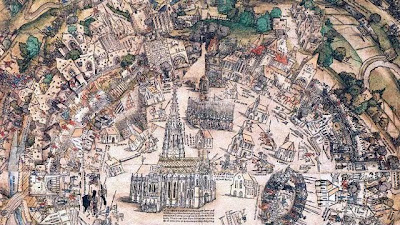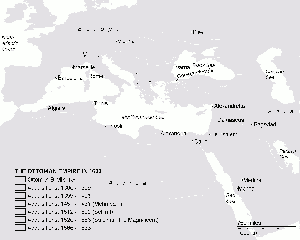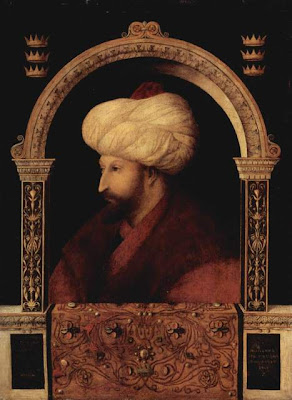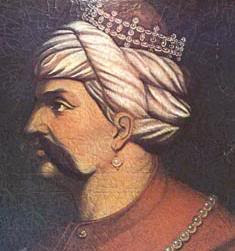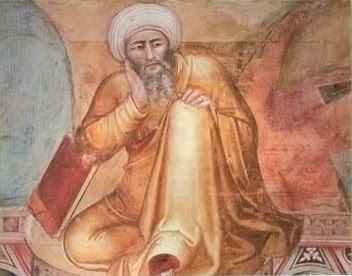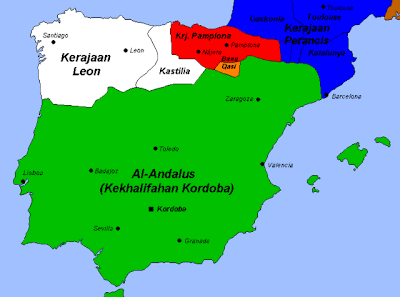Introduction
Pakistan lies in the North Western part of South Asia. It is bordered by China in the North, Afghanistan in the North-West, Iran in South-West, Arabian Sea and Indian Sea in the South and India in the East. Pakistan, as evident, is located at the crossroads of South Asia, Central Asia, and the Middle East making it an easy linking point between Central Asia and South Asia.
There have been significant immigration movements, in the areas now constituting Pakistan since pre-historic times. The people of Pakistan are descendants of different racial groups and sub-racial stocks, who entered the subcontinent over the past 5000 years, mainly from central and western Asia from time to time. Yet unlike the popular misconception, it always maintained its identity and individuality separate from its neighbor India who claimed that Pakistan was a part of Aakhand Bharat (Undivided India) on the basis of history. Hence its partition from India is totally unjustified. But thousands of years of history of the sub-continent tells a different story. It tells us that the areas called Pakistan today had consistently remained as a single, compact and a separate geographical and political entity since ancient times.
Few people would be aware of the true history of Pakistan still; few would know that the oldest stone tool in the world, dating back to 2.2 million years was found at Rabat, about fifteen miles away from Rawalpindi and the largest hand Axe was found in the Soan Valley. And to top it all, the site of the first settled life in the world dating back to the 8th millennium BC has been found at Mehergarh in the Sibi districts of Balochistan. Although Pakistan, as an independent country dates only from August 14th, 1947 and the nation itself can trace its beginnings only to a few centuries ago, yet the territories of Pakistan are heir to one of the richest and the oldest civilizations and settlements of the world.
Indus Valley Civilization
The Indus Valley Civilization or the Harappan Civilization[i] is one of the most fascinating and the oldest civilizations ever known. It flourished between 3000 and 1500 BC by the banks of River Indus or Sind in Pakistan. This civilization existed along the Indus River in present day Pakistan with its main centers at Mohenjodaro in Sind, Harappa in the Punjab, Kej in the Baluch territory and Judeiro Daro in the Pathan region. It is generally believed that the inhabitants of Indus Valley Civilization were Dravidians who came to sub-continent from eastern Mediterranean.
This civilization reached its climax around the two metropolitan centers of Mohenjodaro and Harappa. These cities are well known for their impressive, organized and regular layout. They were the centers of arts and crafts. According to John Marshal, the Harappan people were literate and used the Dravidian language [ii] which is one of the world's first known languages. Their chief occupation was agriculture and trade. The civilization is notable for its strong central government, sense for art and architecture and house planning.
Flood is considered to be the destroyer of this culture due to which agriculture got disrupted and trade routes affected which led majority of the population to migrate to other fertile lands. Those who were left behind fell victim to the Aryan invasion. The civilization lasted for fifteen hundred years.
Arrival of the Aryans
In about 1700 BC, Indus Valley people saw the arrival of new horse-riding nomads from Central Asia leading to the eventual decline of their prosperous and sophisticated Indus Civilization. The Aryans came in at least two major waves in Pakistan. The first wave came around 2000 BC and the second wave came at least six centuries later. It was after the second wave of Aryans invasion that they became dominant and their language spread over the entire length and breadth of the region. They entered through the Swat Valley from the northwest mountain passes and pushed the local people or the Dravidians (the people of Indus Civilization) southwards or towards the jungles and mountains in north. They settled first in Punjab and Indus Valley and then spread eastward and southward. Unlike Indus people Aryans were uncivilized race. Their religious texts and human remains suggest that the Aryans were violent in their invasions. They killed the inhabitants and burnt their cities. A similar view was opined by Stuart Piggot in his book Pre-historic India:
"The Aryan advent was in fact the arrival of barbarians into a region already highly organized into an empire based on a long established tradition of literate urban culture".
Besides being sturdy fighters Aryans were also skilled farmers and craftsmen. They were the worshippers of nature and their religious books were called Vedas. Aryans were tall, well-built and; had attractive features and fair complexion while the inhabitants of Indus Valley were black, flat nosed and of short stature. The Indus people submitted to the superior Aryans and became their slaves. This fact later became the basis of Caste system in order of superiority such as Brahmans (priest) Kashatryas (warriors) and Vaisyas (business community and commoners). The Dravidians were placed in fourth and termed as Sudras (slaves).
Persian Empire
In the 6th century BC, Darius invaded Pakistan and made the Indus plain and Gandhara part of his Persian Empire of the Achaemenid, with his capital at Persepolis in Iran. It was from then onwards that the city of Taxila began to grow and the region saw the rise of another great civilization called the Gandhara Civilization covering most of the northern Pakistan with capitals at both Pushkalavati (Charsadda) and Takshka-sila (Taxila).
As part of the Persian Empire, the region once again rose to zenith. Trade with Iran and the west resumed once again, economy flourished, weapons and other objects of daily use were produced. Charsadda and Taxila became the centers of activity. One of the greatest universities of the ancient world was founded at Taxila. It was at this university that Chandra Gupta Maurya got his education, who later founded the Maurya Empire in South Asia. This prosperous Achaemenian Empire that extended from Pakistan to Greece and Egypt, however, collapsed under the onslaught of Alexander of Macedonia.
Alexander's Invasion
Alexander entered Pakistan from the northern route at Swat and conquered the Gandharan region between 327 and 325 BC. He reached Taxila first. The Raja of Taxila knowing Alexander's vast army's reputation gave him a welcome instead of resistance. Alexander stayed at Taxila for sometime then came across Raja Porus who was the ruler of the territories east of Jehlum. He then went up to River Beas from where his army refused to go further, so he then came down through the entire length of Pakistan, crossed the Hub River near Karachi and departed for home dying on the way. Alexander's invasion brought Greek knowledge and science to Taxila.
Up till here it is notable that during each settlements and invasions may that be of the Indus Valley Civilization, Aryans or during the half a millennium period after Aryan's migrations and during the Persian Empire, Pakistan always stood as a separate entity from India and the period covered by these settlements is about 2200 years.
Mauryan Empire
Alexander's untimely demise at Babylon in 323 B.C resulted in the breakup of his vast empire in to two parts (The Byzantine Empire and Bacterian Greeks). The control of this region therefore fell into the hands of native dynasties and tribes. Chandragupta Maurya was the founder of Maurya Empire who marched into the Gangetic plains, defeated the Nanda Kings and established a strong government at a place called Magadha (present Bihar). However, it should be noted that he ruled from India but he was a son of Potohar region and a Prince of Taxila. He followed Jainism. His grandson Ashoka was a Buddhist.
As the Mauryan rulers did not took into Hinduism and promoted either Jainism or Buddhism, they became subject to Hindu's criticism. Hindu's through their scheming and conspiracy managed to put an end to Mauryan Dynasty and instead gave birth to Brahman origin dynasty of Singhas followed by Kanvas and Indras. These dynasties ruled southern and central India but proved to be weak and short lived.
Graeco-Bactrian Rule
The Bactrian Greeks arrived in Gandhara in 185 BC, about 50 years after the death of Ashoka. They were the decedents of Alexander the Great's armies from Bactria (now Balkh, in northern Afghanistan). They built Greek cities at Taxila and Pushkalavati (Charsadda) and introduced their language, art and religion in the country of Gandhara. Their language lasted more than 500 years and their art and religion had considerable influence on the Gandhara Civilization. The most powerful of the Bactrian Greek ruler was Menander (mid-second century BC). The Graeco-Bactrian rule lasted for only a century.
The Sakas
After the Graeco-Bactrian, Pakistan was divided into several small Greek Kingdoms who fell prey to the great wave of Scythians (Sakas) who migrated on an extensive scale. They were the nomads of North Iran. Sakas overthrew the Greek rulers and established their control all over Pakistan. The Sakas settlements were so vast that Pakistan came to be known as Scythia. Gandhara became the center of the Saka domains, and Taxila was chosen the capital. The Sakas or Scythians were tall, large framed and fierce warriors. They were splendid horsemen and expert in lance. Sakas were followed by the powerful Parthians from east of the Caspian Sea, in about 20 AD.
The Kushans
The Kushans from Central Asia established the Kushan Empire in Indus Valley. The third king of this dynasty Kanishka was the most successful ruler. His reforms earned him fame. Like his predecessors he also took active interest in Buddhism. Kushans made Peshawar their capital. The Kushans period is considered the golden age of Pakistan and brought great wealth and prosperity to the region with the development of the Silk Route to China. It came to be known as Kushana-shahar, the land of the Kushans. It was the Kushan kings who gifted the national dress of shalwar(shirt), kamiz(trousers) and sherwani to Pakistan.
After Kanishka's death, his successors failed to keep the Empire intact. The result of which was that some of its parts were captured by Sassanians of Persia. In the 4th century a new dynasty of Kidar (little) Kushans came to power and established their capital at Peshawar. At more or less the same time Gupta Empire came in to power in the neighboring country of India and annexed a vast area of the sub-continent yet it did not went beyond Sutlej and did not included Kashmir. So during the Gupta period, Pakistan was in the hands of Kushans and Sassanians.
White Huns
The Huns were the nomad tribe of China's western borderland who after conquering Central Asia and Iran invaded Pakistan from Central Mongolia. Their chiefs were called 'Khans'. The particular branch of the Huns, which came to Pakistan, is known as Epthalite or White Huns. One of their mighty rulers was Mehar Gul whose capital was Sakala (present Sialkot). They killed Buddhists and burned all the monasteries. Their conquest completely eliminated the Gupta regime. The origin of majority of the Afghan-Pathan tribes and Rajput and Jat clans of Punjab and Sind, according to modern scholars, are descendents from White Huns. The fall of the Hun rulers resulted in emergence of petty kingdoms which caused deterioration in political, social and economic condition until Muslims came in the scene.
Arab Invasion
During the Rajput's period in north India i.e., 7th to 12th century AD the light of Islam penetrated into this part of the world. Islam arrived in Pakistan from two directions, south and north. In 711 an Arab expedition under a 20 year old Syrian Muhammad Bin Qasim arrived by sea to suppress piracy on Arab shipping and established control of the sub-continent as far as north of Multan and built up a kingdom of Al-Mansurah in Sind. Mohammad bin Qasim conquered Sind and ruled it for about three years before being recalled and killed. After Mohammad Bin Qasim's departure, Muslim rule got confined to Sind and southern Punjab only. However, from this period onward Pakistan was divided into two parts for a long time; the northern one comprising of the Punjab and NWFP and the southern one comprising of Multan, Sind and Balochistan under various Muslim rulers.
The Turks
In 10th century AD, Turkish descendents having their capital at Ghazni attacked this region. They migrated from central Asia and played a prominent part in the political life of the sub-continent for about 200 years. The Ghaznavids, a Turkish dynasty which rose in Afghanistan, succeeded the Arabs and under the leadership of Sultan Mahmud Ghaznavi, established Muslim rule in the sub-continent. Sultan Mahmud of Ghaznah or Mahmud Ghaznavi, son of Turkish King of Ghazni namely Sabuktgin invaded Pakistan from the north. Gandhara, the Punjab, Sind and Balochistan all became part of the Ghaznavid Empire, which had its capital at Ghazni, in Afghanistan and later at Lahore.
With the arrival of Muslims Turks also came the Sufis and dervishes from Central Asia, Iran and Afghanistan who through their teaching spread the message of Islam all over the country. Some of them are Sheik Ismael, Syed Ali Hajveri, Ganj Shakar, Moeen-ud-Ajmeeri, Nizam-ud-Din Oliya, Baha-ud-din Zakiria and Khawaja Moeen-ud-din Chishti. It was due to these pious saints and Sufis that Islam spread to the entire length of the sub-continent. The city of Multan became famous as the city of Saints. Though Ghaznavid rule in Pakistan lasted for over 175 years but Mahmud did not annexed any area beyond Ravi. He contented himself with the annexations of the Punjab only. He was neither a robber nor tyrant as written by some historians. His reputation as a great patron of culture and literature has remained undiminished to this date. It was under his patronage that the well known epic Shahnama was written by Firdawsi.
The Ghaznavid Kingdom came into conflict with the rulers of Ghor who destroyed the city of Ghazna reducing it to ashes. Ghors were Oghuz Turks of Ghor in Afghanistan. Sultan Muhammad of Ghor and his slave lieutenant Qutb-ud-din Aybak raided sub-continent and captured Delhi in 1193. Ghori was a brave soldier and able administrator but not as brilliant as Mahmud Ghaznavi. However, Ghori left a lasting impact on the history of India. He is reputed to be a mild and benovelant man and a just ruler. He had not any heirs. He trained his slaves in warfare and administration. It was Aybak, one of his slaves who became his successor after Ghori's assassination in 1206.
After the death of Ghori, his slave Qutab-ud-Din Aybak established the first Turkish Slave Dynasty (1206-90), which lasted for over 300 years. Aybak was the most trusted general of Muhammad Ghori and was given the administrative control of some of the conquered lands. He initially made Lahore as the capital but later moved to Delhi thatswhy the slave dynasty is also referred as the Sultanate of Delhi. However Aybak's reign was short lived (5 years) and he was succeeded by nine other slave kings. Among his successors, his son-in-law, Iltutmish (1211-36), Raziyya Sultana (1236-1239) and Balban were the most famous. Balban is remembered for his strong centralized government. With his death, the dynasty declined and the final blow came in a form of a Jalaluddin Firuz Khilji. The Sultanate period brought the greater part of the sub-continent under its control and established Muslim Rule on firm grounds.
The Sultanate period also saw the rise and fall of 4 other dynasties in rapid succession: the Khiljis (1290-1320), the Tughlaqs (1320-1413), the Sayyids (1414-51), and the Lodhis (1451-1526). The Khiljis were Turks by origin but had resided in Afghanistan so long that they were no longer regarded as Turks. They took control of the sub-continent in a form of a coup. Among them the Alao-Din-Khilji, was the most famous as he had a great impact on the history of India. He was efficient, imaginative and strong ruler. The Khilji Empire lasted for 30 years. The Khiljis were succeeded by the Tughluqs who consolidated the Muslim rule and revived the empire. The Tughluqs restored the public works of utility such as forts and canals and reestablished law and order. The Sayyids and the Lodhis followed next and their rule remained till 1526 when Babur founded the Mughal Empire.
The Mughals
'Mughal' is the Persian translation of the word 'Mongol' from which we get the English word 'mogul' meaning 'tycoon'. The Moguls were the last of the Mongols. In the 16th century, Zaheeruddin Mohamed Babur, the first Mughal Emperor and a descendent of Tamerlane and Genghis Khan, raided the Punjab from Afghanistan and defeated Ibrahim Lodhi, at the historic battle of Panipat and founded the Mughul Empire. Babur was succeeded by his son, Humayun in 1530. Humayun was ousted by the Sher Shah Suri, who ruled the empire until his death in 1545. Humayun who went into self exile in Persia returned and regained the throne in 1554 but died two years later. He was succeeded by his son Akbar. Akbar was the greatest of the Mughal Emperors and ruled the longest period. He improved the centralized administrative system and was a great patron of art and literature. Mughal art and architecture reached its height under Akbar's son Jahingir reign, and later under his grandson Shah Jahan. They left a heritage of magnificent mosques, palaces, tombs, forts and gardens which can still be seen in Lahore, Multan, Jehlum and other places. Auranzeb succeeded Shah Jahan and who ruled from 1658 to 1707. He was a pious man and an efficient administrator. With the death of Auranzeb, the great Mughal Empire (1526-1857) disintegrated.
In 1739, Nadir Shah of Persia invaded the region and after his death Ahmed Shah Abdali founded the kingdom of Afghanistan in 1747. Then in the early 19th century, the Sikhs pushed the Afghans back to the Khyber Pass. Ranjit Singh, the famous Sikh leader made Lahore his capital and ruled from 1799 to 1839. The Sikh rule collapsed under the British and thus ended the Muslim rule in the subcontinent. However it should be noted that unlike Britishers "Muslim rule in India was established by immigrant elite. The Muslims didn't rule India from a distant homeland, nor were they members of a dominant group within the Indian Social community".
The British Period
The British arrived as merchants with the British East India Company at the beginning of the 17th century and gradually became involved in Indian politics and finally, after the battle of Plassey in 1757, began to conquer the sub-continent. By 1843, Sind was completely in their control. They defeated the Sikhs in 1845 and 1849 in Anglo-Sikh War.
After the First War of Independence in 1857 (also known as the Sepoy Mutiny), the British Government took direct control of Pakistan. This marked the beginning of the British Raj (British Rule), and in the name of Queen Victoria the British continued to expand their empire. Hunza on the Chinese border was the last area to fall into British hands, in 1891; only Afghanistan and some western most areas of Pakistan continued to remain outside their control. They demarcated the Durand Line in 1893 to separate Pakistan from Afghanistan. The British had a strong influence on modern Pakistan. They not only introduced their administrative and legal systems, but also brought with them their culture, language, art and architecture, some of which can still be seen in Pakistan today.
The Struggle for Pakistan
After the unsuccessful First War of Independence in 1857, the British determined to suppress and weaken the Muslims, whom they held mainly responsible for the uprising. Sir Syed Ahmed Khan (1817-98) made one of the first attempts to restore Muslim status by founding the Aligarh Movement. Muslims formed a political party with the name of Muslim League under the chairmanship of Nawab Salimullah Khan in 1906 at Dhaka. Yet it was only when Jinnah assumed the leadership of Muslim League in 1936 that it became a dynamic, national organization of the Muslims.
In 1930, a Muslim poet and a philosopher Dr. Muhammad Iqbal proposed the creation of a separate Muslim state for those areas of the subcontinent with a Muslim majority. His proposal was adopted by Muhammad Ali Jinnah, a British trained lawyer and Pakistan's first head of state. This idea of a separate Muslim state in the sub-continent to be called Pakistan took the form of a resolution adopted by the Muslim League in 1940 at its Lahore session. This was the Lahore resolution that came to be popularly known as Pakistan Resolution. The philosophy on which it was based is called Two Nation Theory, which emphasized on the individuality of Hindus and Muslims stating that these two nations have their own civilization, culture, historical heritage and religion due to which they can not live under a single country. This provided the basis for Pakistan.
The British realized that they would have to relinquish their hold upon the sub-continent so on 20th February 1947; the British Prime Minister Mr. Lord Atlee announced that the British Government would hand over the power of the sub-continent to its natives. It was finally agreed that the sub continent should be partitioned and the power will be handed over to the two states at Independence on the mid-night of 14th and 15th August 1947. Thus the Muslims struggle under the dynamic leadership of Muhammad Ali Jinnah bore fruit; the sub-continent won Independence from English and Pakistan was created as a sovereign and independent Muslim state on 14th August 1947.
It was decided that Pakistan would comprise the eastern (present Bangladesh) and western (present Pakistan) wings of the country. The Muslims living in Indian region had to migrate to Pakistan. This migration was accompanied by terrible violence and bloodshed not to mention various problems of division Pakistan had to face in the hands of uncooperative Indians.
Independent Pakistan
The world has always known two different countries and cultures in the sub-continent; one based on the Sindhu or Indus (Pakistan) and the other on the Ganges Valley (India) known as Bharatvarta. The Sindhu country with its Harappan Civilization had its control from Rupar on upper Sutlej to the lower reaches of the Indus on the Arabian Sea, the territory now covered by Pakistan. The Sindhu Land was always notable for its independent existence, completely detached from Gangetic Valley or India.
Moreover, Pakistan as an independent country always looked westward and had more cultural, commercial and political connections with the Sumerian, Babylonian, Persian, Greek and Turks than with the Gangetic Valley. During the 5000 years of Pakistan's known history, Pakistan remained part of India for a total period of 711 years of which 512 years were covered by the Muslims period and 100 years each by the Mauryan (mostly Buddhist) and British periods. Pakistan had remained either independent or part of powers at west and its attachment to India was only an exception.
This may be the reason that there is barely any Hindu architectural influence in Pakistan and instead of Hinduism; Islam shapes the lives of most Pakistanis. Moreover, Hindus themselves have always regarded Yavanas (the inhabitants of Pakistan) in those days as impure and outside the limits of Aryandom. So Pakistan as a part of India is a weak theory having no historical grounding. It was indeed the famous Two Nation Theory formulated by Iqbal and realized by Jinnah that led to the creation of Pakistan in 1947.
Notes:
[i] Called 'Indus Valley' by John Marshall, Mohenjodaro and the Indus Valley Civilization pp.i-iii (London, 1931), and 'Harappan' by Stuart Piggott, Prehistoric India (London: Pelican Books, 1950), p. 132.
[ii] Quoted in Ancient Cities of the Indus, Gregory L. Possehl (ed), Carolina Academic Press, New Delhi, 1979, pp. 105-107.
References:
1. Dani A H. Pakistan: History through the centuries. [Online] [Cited 2009 April 2] Available from: heritage.gov.pk/html_Pages/history1.html
2. Shaw I. Pakistan Handbook. The guide book company Ltd. Hong Kong. 1989.
3. Abdulla A. The historical background of Pakistan & its people. Tanzeem Publishers. Karachi. 1973.
4. Possehl G L (ed). Ancient cities of the Indus. Carolina Academic Press. New Delhi. 1979.
5. Rahman T. Peoples & languages in pre-Islamic Indus Valley. [Online] [Cited 2009 April 2]. Available from:
inic.utexas.edu/asnic/subject/peoplesandlanguages.html
6. Haroon A. Muhammad Bin Qasim to General Pervaiz Musharraf: Triumphs, tribulations, scars of 1971 tragedy & current challenges. KRL Post Office Box 502. Rawalpindi. 2000.
7. Piggot S. Pre Historic India. Penguin Books. 1950.
8. Akhtar R (ed). Pakistan Year Book 1974. East & West Publishing Company. Karachi.
9. Elliot H M & Dowson J. The History of India as told by its own historians: The Muhammadan Period. Vol. 1. Trubner & Co. London. 1867-1877.
10. P.M Holt, Ann K.S, Lambton & Lewis B(eds). The Cambridge History of Islam: The further Islamic Lands, Islamic Society & Civilization. Cambridge University Press. 1970.
11. Hardy P. The Muslims of British India. Cambridge University Press. London. 1972.











